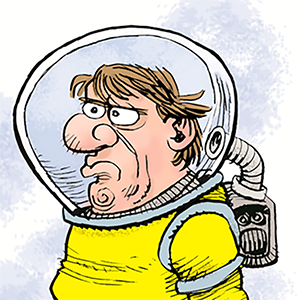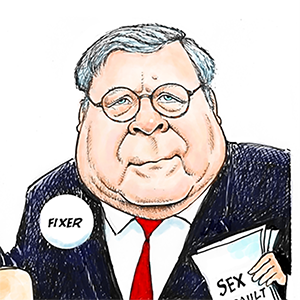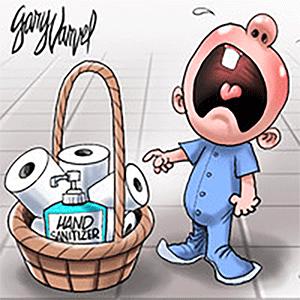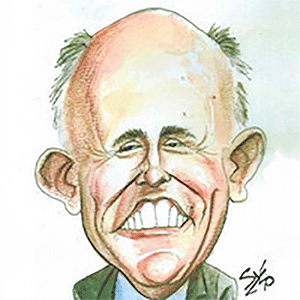What's behind Minnesota town's high crime rate?
Published in News & Features
BEMIDJI, Minn. — Not many people were window shopping downtown during the cold snap last week, but Kevin Johnson kept his gift shop full of Paul Bunyan merch and buffalo plaid open as he packed up holiday decorations.
As co-chair of the city’s downtown alliance, he talks all the time about the crime rate in Bemidji. It historically hovers near the state’s highest and is sure to be mentioned when someone in the Bemidji Chit Chat Facebook group posts they want to move to town. Or when Johnson works the Visit Bemidji booth at the State Fair, people without fail will come up and start talking about Bemidji’s crime rate.
“And they won’t drop it,” he said. “You know, it is high. But it’s not murders. It’s not stabbings. It’s petty theft, petty crime. Because people are cold, they want to get in somewhere warm right now, or they just see something laying there and they steal it.”
Bemidji has long grappled with a high crime rate, as well as a perception problem related to that. Almost 40 years ago, the then-Minneapolis Star and Tribune reported about that the smaller, growing Bemidji was “the crime capital of Minnesota.”
Locals say complex social issues of poverty and substance abuse drive the city’s crimes. Bemidji’s 21% poverty rate is twice the state average, and Beltrami County also has among the state’s highest overdose rates. When looking at the three reservations that surround the city — White Earth, Red Lake and Leech Lake — those communities experience even higher rates of poverty and overdoses.
“One of my good friends who works in mental health said we are a rural community with inner city problems,” said Beltrami County Sheriff Jason Riggs.
In the fall, the county was designated as a federal high-intensity drug trafficking area. It’s a designation about as desirable as “the most dangerous city in Minnesota,” as some websites proclaim.
”There’s just a lot of people who are in a tough situation in this community and they’re going to be victims of crime themselves,” Beltrami County Attorney David Hanson said.
Officials and experts say the crime rate can be misleading and it’s not always a complete picture of a city’s sense of safety. There are nuances not captured in a single number.
“I’ve often said we’re a victim of math. We suffer the consequences of an equation that isn’t fair, that doesn’t account for our unique area,” said Police Chief Mike Mastin.
Like many other cities, Bemidji’s violent crime rate increased after the pandemic struck in 2020, and the town has recorded four homicides since — about a fifth of all killings in the city since the 1980s, according to FBI data. And, like other cities, those violent crime rates dropped in 2023.
Some people use BCA data to suggest Bemidji’s overall crime rate ranked highest in Minnesota in 2023, because it shows a staggering 14,300 crimes per 100,000 people, more than Minneapolis or St. Paul.
But the FBI has long cautioned against ranking cities by public safety metrics, because crime rates can represent radically different realities between communities.
For small towns, even minor changes to crime numbers can lead to sharp swings in per capita crime rates, compared with larger cities. Despite 40% population growth the past three decades, Bemidji’s crime rates have remained among the state’s highest, but rates also can ebb and flow dramatically.
High per capita rates can also represent relatively few actual offenses. In 2023, the number of crimes in Bemidji, Isle (800 people) and Dilworth (4,800 people) combined for fewer than 3,000 offenses — even though their crime rates topped that of Minneapolis, which had about 47,000 offenses.
Bemidji’s population also doesn’t factor in the daytime surge when its population more than doubles. The regional hub is a draw for retail, tourism, school and work. People drive hours to make it to the nearest Walmart or Target here. The Brainerd-Baxter area, 100 miles to the south, is the closest comparable hub.
Mastin said Bemidji wouldn’t be “anywhere near the top” of the state’s crime rates if that surge was taken into account.
But Hanson said a larger daytime population isn’t the only factor inflating the crime rate when St. Cloud, Duluth and Brainerd, also regional hubs, don’t rank as high as Bemidji.
“There’s a huge drug problem, and drugs drive crime,” he said, adding that it also sends child protection cases “through the roof.”
“It’s not just the possession of it, it’s the desire to do more drugs, and if you don’t have resources, then you resort to theft, burglary, assault to steal, who knows what.”
While murder rates are generally considered more comparable across geographies, Bemidji’s four pandemic-era homicides were half domestic in nature and two involved stabbings — a very different trend from recent surges in Minneapolis bloodshed driven principally by gun violence in its streets.
Violence like homicides, rape, robbery and aggravated assault comprised only about 4% of Bemidji’s offenses from 2021-2024. About 40% of offenses were larcenies, nearly a fifth were simple assaults and 11% were drug violations.
Mayor Jorge Prince said while violent crime remains low, “we have certain things that have happened in our city that I find very disturbing.”
He noted there are two high-profile cases of missing Indigenous teens — Jeremy Jourdain and Nevaeh Kingbird — unsolved now for years. In 2023, an 11-year-old girl was raped but prosecutors dropped charges when they couldn’t get a DNA match from evidence that suggested three offenders.
Last summer, downtown comic book store owner Roy Booth was attacked on the sidewalk in his wheelchair. He now wears an eye patch and has to undergo surgeries, but recovery of full vision isn’t expected.
His store has been a fixture downtown for 30 years. “If we do shut down, it will be because of crime,” Booth said.
He knows the woman who attacked him — he had kicked her out of his store years ago for walking in with a vodka bottle. She absconded from sentencing in August and a warrant is still out for her arrest.
“It’s maddening ... there’s got to be accountability.”
Bri Harris is among the 20 unhoused people in town who make the trek to the library each morning when the People’s Church shelter closes for the day.
“I wish I was somewhere warmer, but right now, this is a safe place,” she said. “I know what I’m doing every day.”
Harris, 27, who is from Washington, wants to get a job working from home. She’s been on a waitlist for subsidized housing since September when she was dropped off here because of the shelters available.
Reed Olson’s nonprofit operates the other overnight homeless shelter that opened about a decade ago. In recent years they opened a day center to meet a growing need.
Olson said the city can’t arrest its way out of this problem. The crime rate says “we desperately need help,” he said. “We need jobs, housing, mental health care.”
Like many communities, there’s a lack of affordable housing. In 2023, nearly 50 residents of a federally subsidized apartment complex were given six days to find new housing after inspections found serious structural issues. There are plans to rebuild.
More addiction resources are as big a need as housing.
Sheriff Riggs said when he came to Bemidji 20 years ago, “alcohol was more prevalent as far as the drug of choice ... and there were no detox beds in Bemidji,”
Now the drug of choice is fentanyl, and the city has added four detox beds. Advocates say that’s not enough.
Chris Uggen, a criminologist and sociologist at the University of Minnesota, said unmet needs in Bemidji lend themselves to a higher crime rate. But “it’s important not to demonize a community.”
He said proximity to reservation land is predictive of crime and punishment, and Indigenous people are the most over-punished population in the state.
“And it’s clear looking at the incarceration numbers. It’s clear, looking at the arrest numbers,” he said. “Structural racism deprives people and communities of the resources that hold crime in check. ...Those systemic inequalities also affect rates of crime.”
Beltrami County Commissioner Tim Sumner, from Red Lake, said discrimination factors into overincarceration and recidivism of Indigenous people.
“It’s like anytime we go out we got a target on our back. It’s uncomfortable ... even myself as an elected official I still get an uneasy feeling when I see law enforcement,” Sumner said. “Maybe it could be the generational trauma that we haven’t really dealt with.”
Sumner said the three tribes surrounding Bemidji contribute financially to the city but are “oftentimes looked at as a burden on services” when more resources are needed to improve outcomes for all people on many fronts.
“If we have a healthy community, that’s going to help improve the tourism industry, that’s going to help bring businesses, that’s going to help the housing situation. But I think our first step is getting our communities healthy.”
Earlier this month, the county opened the application process for organizations to access opioid settlement grants to prevent and address addiction.
Johnson, with the downtown alliance, said the group is considering hiring private security guards to patrol downtown. They are also looking at grants to help pay to install security cameras at every intersection downtown and share footage with the police department that he says struggles to keep a full roster.
Through the federal designation as a high drug trafficking area, the county will receive funding that Riggs said is “going to help us go after the people that are bringing this poison into the community.”
Prince grew up in Bemidji. He raised a family and made investments here as a business owner. “My own life has been testimony to how safe I actually feel in this community.”
Parents still send their kids to college here and tourism is strong, he said. But he wants to see more affordable housing, higher high school graduate rates and incremental improvements to lower the crime rate.
And even if the crime rate were cut in half, Prince said he would still want it to be better.
©2025 The Minnesota Star Tribune. Visit at startribune.com. Distributed by Tribune Content Agency, LLC.







Comments